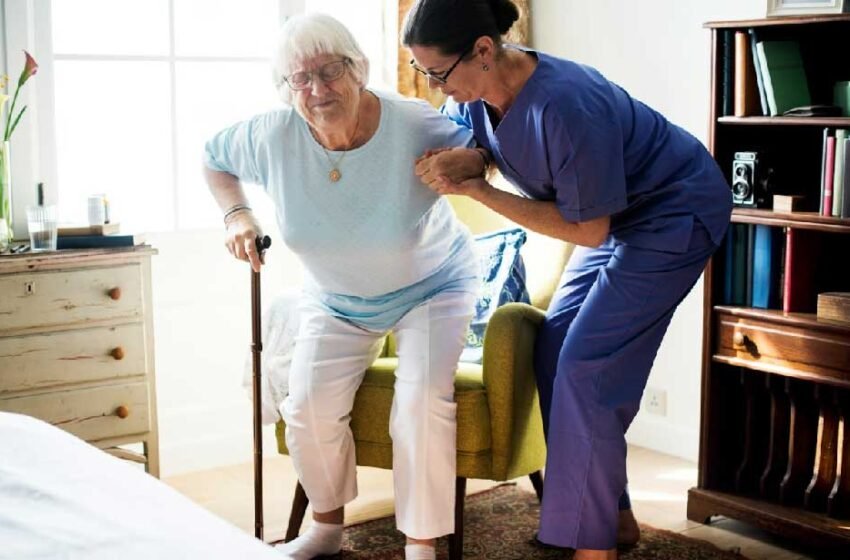Hospice at Home: What to Expect and How to Prepare

When someone you love is nearing the end of life, making sure they’re comfortable, safe, and surrounded by familiar faces becomes a top priority. Hospice at home allows families to provide that kind of care in a setting filled with memories and love of their own home.
This guide walks you through what hospice at home looks like, how to prepare, and what support systems are available. Whether you’re making this decision for a parent, spouse, or friend, knowing what to expect can help you face the road ahead with greater confidence and peace of mind.
https://unsplash.com/photos/nurse-helping-senior-woman-to-stand-ofRUA4W-10I
What Hospice at Home Involves
Hospice at home is a type of care focused on comfort rather than curing an illness. It’s intended for individuals with a life expectancy of six months or less, as determined by a doctor.
This care involves a team of healthcare professionals nurses, social workers, aides, and spiritual counselors working together to manage pain and symptoms while also offering emotional and spiritual support.
Families are not alone. Hospice providers offer 24/7 phone support, regular home visits, and ongoing guidance. Many services and equipment needs are covered by Medicare, Medicaid, or private insurance.
Is Your Home Ready for Hospice Care?
Your home doesn’t need to be perfect just safe and accessible.
Start by identifying a room for your loved one to rest, ideally on the main floor. Clear pathways, remove trip hazards like loose rugs, and consider installing grab bars in the bathroom. Make sure medical equipment can fit comfortably and caregivers have enough space to move around. A few thoughtful touches can make a big difference: keep supplies within reach, add soft lighting, and create a peaceful, quiet atmosphere.
Emotional and Mental Prep for Families
No one is ever fully prepared to say goodbye, but understanding your emotions can help you cope. Families often cycle through sadness, fear, anger, and even guilt and all of it is valid.
Lean on your support system. Whether it’s friends, relatives, or a counselor, talking helps. Take breaks. Ask for help. Accept help. You’re not expected to do it all alone.
Most importantly, be present. Sit with your loved one. Hold their hand. These moments can be deeply healing for everyone involved.
Common Myths You Shouldn’t Believe
Many people mistakenly think that choosing hospice means giving up. It doesn’t. It means prioritizing quality of life, comfort, and peace instead of continuing aggressive treatments that may no longer help.
Another misconception is that hospice is only for the final days of life. In truth, patients and families benefit the most when hospice is started earlier. It provides emotional, spiritual, and physical support not just for the patient but for the entire family.
Hospice care also isn’t cold or clinical. It can be warm, deeply personal, and incredibly meaningful.
Looking for a hospice near LA? Olympia Hospice Care offers compassionate support and care during the final chapters of your loved ones. Their team is dedicated to making this transition as peaceful and comforting as possible.
How to Talk to Your Loved One About Hospice
This conversation is never easy. Start gently by asking how they’re feeling about their care. What matters most to them now? Then, just listen. Use comforting phrases like, I want to make sure you’re as comfortable as possible, or Let’s talk about what you want the next few months to look like. There’s no need to rush the talk. It may take multiple conversations, and that’s perfectly okay. The goal is to make a plan together one that honors your loved one’s wishes.
What the First Week of Hospice at Home Looks Like
The first week focuses on setting things up. A nurse will assess your loved one’s needs and create a care plan. Medical equipment and supplies are delivered, and medications are adjusted to ensure comfort. You’ll meet the care team; they’ll show you how to assist with daily needs like bathing, repositioning, or giving medications. It may feel overwhelming at first, but you’re not alone. The hospice team will check in regularly and is always a phone call away.
Knowing Where to Turn for Help
Choosing hospice doesn’t mean you’re on your own. There’s a wide support network available. In addition to hospice providers, you can lean on community groups, religious organizations, and grief counselors. Many families also find comfort in online support forums and local caregiver meetups. Never hesitate to ask questions or request more support help is there when you need it.
Small Comforts That Make a Big Impact
Sometimes the smallest touches can provide the biggest comfort.
Create a playlist of your loved one’s favorite music. Use familiar scents like lavender, fresh flowers, or cookie baking. Bring in a pet for a visit if it brings joy and calm. Let natural light fill the room when possible. Simple gestures help create a peaceful, loving environment.
Encourage other family members to contribute too. Someone might prepare a favorite meal or read a cherished book aloud. Hospice care involves the whole family, not just the patient.
When It’s Time to Say Goodbye
As time passes, signs of decline may become more noticeable reduced appetite, more sleep, or slower responses. These changes are natural. Your hospice team will guide you through what to expect and help keep your loved one comfortable. They’ll also offer emotional and spiritual support so everyone can prepare. Grief doesn’t wait for a specific moment. It can begin before loss, continue during, and linger after. But many families find that home hospice allows for a gentler, more peaceful farewell.





